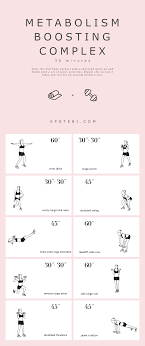Losing weight is a common goal for many individuals, and exercise plays a crucial role in achieving this objective. Engaging in regular physical activity not only helps burn calories but also improves overall health and well-being. In this article, we will explore the importance of exercise for weight loss and provide some effective exercises to incorporate into your fitness routine.
Exercise is an essential component of any weight loss journey as it helps create a calorie deficit. When you engage in physical activity, your body burns calories to provide the energy needed for movement. By consistently burning more calories than you consume through a combination of exercise and a balanced diet, you can effectively lose weight.
Cardiovascular exercises are particularly effective for weight loss as they elevate heart rate and increase calorie expenditure. Activities such as running, cycling, swimming, or brisk walking can help burn significant amounts of calories while improving cardiovascular fitness. Aim for at least 150 minutes of moderate-intensity aerobic exercise or 75 minutes of vigorous-intensity aerobic exercise per week.
Strength training exercises should also be incorporated into your routine to build lean muscle mass. While cardio exercises primarily burn calories during the activity itself, strength training helps increase metabolism by building muscle tissue. This means that even at rest, your body will burn more calories. Include exercises like squats, lunges, push-ups, and deadlifts to target major muscle groups.
Interval training is another effective approach to maximize calorie burn during workouts. This involves alternating between high-intensity bursts of exercise and short recovery periods. For example, you could sprint for 30 seconds followed by 1 minute of walking or jogging before repeating the cycle several times. Interval training not only burns more calories but also helps improve cardiovascular fitness more efficiently than steady-state cardio exercises.
Incorporating activities that you enjoy into your fitness routine can make weight loss exercise more enjoyable and sustainable in the long run. Whether it’s dancing, hiking, playing sports, or taking group fitness classes, finding activities that bring you joy will increase your motivation and adherence to regular exercise.
Remember that weight loss is a gradual process, and consistency is key. It’s important to start slowly if you’re new to exercise and gradually increase the intensity and duration of your workouts. Additionally, consult with a healthcare professional or a certified fitness trainer before starting any new exercise program, especially if you have any underlying health conditions.
In conclusion, exercise is an essential component of weight loss. Incorporating a combination of cardiovascular exercises, strength training, interval training, and activities you enjoy into your routine can help you achieve your weight loss goals. Stay consistent, stay motivated, and remember that adopting a healthy lifestyle is about more than just shedding pounds – it’s about improving your overall well-being.
8 Frequently Asked Questions About Weight Loss Exercise: Answered
- What type of exercise is best for weight loss?
- How often should I exercise to lose weight?
- How much time should I spend exercising to lose weight?
- What are the best exercises to burn fat?
- What kind of diet should I follow while exercising to lose weight?
- Is it better to do cardio or strength training for weight loss?
- Are there any special techniques or tips that can help me reach my fitness goals faster?
- What are some easy exercises that I can do at home to help with weight loss?
What type of exercise is best for weight loss?
When it comes to weight loss, the best type of exercise is a combination of cardiovascular exercises, strength training, and high-intensity interval training (HIIT). Each of these exercise modalities offers unique benefits that contribute to effective weight loss.
Cardiovascular exercises, also known as aerobic exercises, are excellent for burning calories and increasing your heart rate. These activities include running, cycling, swimming, brisk walking, dancing, and aerobics. Engaging in cardio exercises helps create a calorie deficit and promotes fat loss. Aim for at least 150 minutes of moderate-intensity aerobic exercise or 75 minutes of vigorous-intensity aerobic exercise per week.
Strength training exercises are crucial for building lean muscle mass. While cardio exercises primarily burn calories during the activity itself, strength training helps increase metabolism by building muscle tissue. This means that even at rest, your body will burn more calories. Include exercises like weightlifting, bodyweight exercises (such as squats and push-ups), resistance band workouts, or using weight machines at the gym. Aim to incorporate strength training exercises at least two days a week.
High-intensity interval training (HIIT) is a form of workout that alternates between intense bursts of exercise and short recovery periods. This type of exercise elevates heart rate quickly and burns more calories in less time compared to steady-state cardio workouts. HIIT can be done with various activities such as sprinting, cycling, jumping rope, or bodyweight exercises like burpees and mountain climbers. Incorporating HIIT into your routine can help increase calorie burn even after your workout due to the “afterburn effect.”
It’s important to note that the best type of exercise for weight loss is one that you enjoy and can stick with consistently. Finding activities that you genuinely enjoy will not only make your workouts more enjoyable but also increase your motivation to continue exercising regularly.
Remember that while exercise is crucial for weight loss, it should be complemented by a balanced and healthy diet. Weight loss is a result of creating a calorie deficit, which can be achieved through a combination of exercise and proper nutrition.
Consulting with a healthcare professional or certified fitness trainer can provide personalized guidance based on your specific needs and fitness level. They can help design an exercise program tailored to your goals and ensure you’re performing exercises correctly and safely.
How often should I exercise to lose weight?
To effectively lose weight through exercise, it is recommended to aim for a minimum of 150 minutes of moderate-intensity aerobic activity or 75 minutes of vigorous-intensity aerobic activity per week. This translates to about 30 minutes of exercise on most days of the week. However, it’s important to note that the frequency and duration of exercise can vary depending on individual circumstances and goals.
If you’re just starting out or have a busy schedule, you can break down your workouts into shorter sessions throughout the day. For example, you could engage in three 10-minute sessions of moderate-intensity exercise each day.
Additionally, incorporating strength training exercises into your routine two or more days per week is beneficial for building muscle mass and boosting metabolism. Strength training can include activities such as weightlifting, bodyweight exercises, or resistance band workouts.
Remember that consistency is key when it comes to weight loss. It’s better to maintain a regular exercise routine over time rather than pushing yourself too hard in the beginning and burning out quickly. Gradually increase the intensity and duration of your workouts as your fitness level improves.
It’s important to listen to your body and give yourself rest days as well. Rest and recovery are crucial for allowing your muscles to repair and grow stronger. Overtraining can lead to injuries and hinder progress.
Lastly, keep in mind that exercise alone may not be sufficient for weight loss. A balanced diet that includes appropriate portion sizes and a focus on nutrient-dense foods is also vital for achieving sustainable weight loss results. Consulting with a healthcare professional or registered dietitian can provide personalized guidance based on your specific needs and goals.
How much time should I spend exercising to lose weight?
The amount of time you should spend exercising to lose weight can vary depending on various factors, including your current fitness level, weight loss goals, and overall health. However, the American Heart Association (AHA) recommends at least 150 minutes of moderate-intensity aerobic exercise or 75 minutes of vigorous-intensity aerobic exercise per week for general health benefits.
If weight loss is your primary goal, you may need to increase the duration or intensity of your workouts. The AHA suggests that to achieve significant weight loss or maintain weight loss after losing weight, you may need to gradually increase your exercise duration to 300 minutes per week of moderate-intensity aerobic activity or 150 minutes per week of vigorous-intensity aerobic activity.
It’s important to note that these recommendations are guidelines and can be adjusted based on individual circumstances and preferences. Some individuals may find it more effective to engage in longer workout sessions a few times a week, while others may prefer shorter daily workouts. The key is consistency and finding a routine that works best for you.
In addition to cardiovascular exercises, incorporating strength training into your routine is beneficial for weight loss. Aim for at least two days per week of strength training exercises targeting major muscle groups.
Remember that exercise alone may not be sufficient for weight loss. It should be combined with a balanced diet that includes appropriate calorie intake and nutritional choices. Consulting with a healthcare professional or a certified fitness trainer can provide personalized guidance tailored to your specific needs and goals.
Ultimately, finding the right balance between exercise duration, intensity, and frequency is crucial. Gradually increasing your activity level over time and making sustainable lifestyle changes will contribute to successful long-term weight loss.
What are the best exercises to burn fat?
When it comes to burning fat, incorporating a combination of cardiovascular exercises and strength training into your fitness routine is highly effective. Here are some of the best exercises to help you burn fat:
- High-Intensity Interval Training (HIIT): HIIT involves short bursts of intense exercise followed by brief recovery periods. It can be done with various exercises such as sprinting, cycling, or bodyweight movements like burpees or mountain climbers. HIIT workouts are known to boost metabolism and burn calories long after the workout is over.
- Running or Jogging: Running or jogging is a fantastic cardiovascular exercise that burns a significant amount of calories. Whether you prefer outdoor running or using a treadmill, this activity engages multiple muscle groups and helps improve endurance while torching fat.
- Cycling: Cycling is a low-impact exercise that can be done indoors on a stationary bike or outdoors on a road or mountain bike. It effectively targets the lower body muscles while providing an excellent cardiovascular workout.
- Jumping Rope: Jumping rope is a simple yet highly effective exercise for burning fat. It engages the entire body and elevates heart rate quickly, making it an efficient calorie-burning activity.
- Rowing: Rowing is an excellent full-body workout that engages both upper and lower body muscles simultaneously. Whether using a rowing machine at the gym or rowing in water, this low-impact exercise helps burn calories while improving strength and endurance.
- Circuit Training: Circuit training involves performing a series of exercises back-to-back with minimal rest in between. This keeps your heart rate elevated throughout the workout, leading to increased calorie burn and fat loss.
- Strength Training: While cardio exercises primarily focus on burning calories during the workout, strength training helps build lean muscle mass, which increases metabolism even at rest. Incorporate compound exercises like squats, deadlifts, lunges, bench presses, and overhead presses into your routine to maximize fat-burning potential.
Remember, the key to burning fat effectively is consistency and finding activities that you enjoy. It’s also important to combine regular exercise with a balanced diet to achieve optimal results. Consult with a healthcare professional or a certified fitness trainer for personalized guidance and recommendations based on your fitness level and goals.
What kind of diet should I follow while exercising to lose weight?
When it comes to losing weight, exercise alone is not enough. A balanced and nutritious diet is equally important in supporting your weight loss goals. Here are some guidelines to consider when planning your diet while exercising for weight loss:
- Calorie deficit: To lose weight, you need to create a calorie deficit, which means consuming fewer calories than you burn. Calculate your daily calorie needs based on your age, gender, activity level, and weight loss goals. Aim for a moderate calorie deficit of around 500-750 calories per day for gradual and sustainable weight loss.
- Macronutrient balance: Focus on consuming a well-balanced diet that includes all three macronutrients – carbohydrates, proteins, and fats – in appropriate proportions. Carbohydrates provide energy for workouts, proteins support muscle growth and repair, and healthy fats help with satiety and overall health.
- Portion control: Pay attention to portion sizes to avoid overeating. Use measuring cups or a food scale to accurately measure your food portions until you become familiar with appropriate serving sizes.
- Whole foods: Emphasize whole foods in your diet such as fruits, vegetables, lean proteins (such as chicken breast or fish), whole grains (like brown rice or quinoa), legumes (beans and lentils), and healthy fats from sources like avocados, nuts, and seeds.
- Hydration: Stay adequately hydrated by drinking plenty of water throughout the day. Water helps with digestion, regulates body temperature, and can help control appetite.
- Meal timing: Consider spreading your meals throughout the day into smaller portions rather than having three large meals. This can help regulate blood sugar levels and prevent excessive hunger or overeating.
- Mindful eating: Practice mindful eating by paying attention to hunger cues and eating slowly. This allows you to better recognize when you’re full and avoid unnecessary overeating.
- Limit processed foods and added sugars: Minimize your intake of processed foods, sugary beverages, and snacks high in added sugars. These can contribute excess calories without providing essential nutrients.
- Seek professional guidance: If you have specific dietary needs or medical conditions, it’s advisable to consult with a registered dietitian or healthcare professional who can provide personalized guidance tailored to your situation.
Remember, a sustainable weight loss journey is not about extreme restrictions or fad diets. It’s about adopting a healthy and balanced approach to eating that you can maintain in the long term. Combining regular exercise with a nutritious diet will optimize your weight loss efforts and support overall well-being.
Is it better to do cardio or strength training for weight loss?
Both cardio and strength training have their benefits when it comes to weight loss. The best approach is to incorporate both types of exercises into your fitness routine for optimal results.
Cardiovascular exercises, such as running, cycling, or swimming, are effective for burning calories during the activity itself. They elevate heart rate and increase overall calorie expenditure, which can contribute to weight loss. Cardio exercises also improve cardiovascular fitness and endurance.
Strength training, on the other hand, helps build lean muscle mass. While it may not burn as many calories during the actual workout compared to cardio exercises, it has a long-term effect on metabolism. Muscle tissue is more metabolically active than fat tissue, meaning that even at rest, your body burns more calories if you have more muscle mass. This can help with weight loss in the long run.
Additionally, strength training helps shape and tone your body as you lose weight. It can improve overall strength and functional fitness, making daily activities easier and reducing the risk of injuries.
To achieve the best results for weight loss, it’s recommended to combine both cardio and strength training exercises in your routine. This combination allows you to burn calories during cardio workouts while building muscle mass through strength training. The increased muscle mass will enhance your metabolism and help maintain weight loss in the long term.
Remember that everyone’s fitness goals and preferences may vary. It’s essential to find a balance that works for you and that you enjoy so that you can stay consistent with your exercise routine. Consulting with a certified fitness professional can also provide personalized guidance based on your specific needs and goals.
Are there any special techniques or tips that can help me reach my fitness goals faster?
Absolutely! Here are some special techniques and tips that can help you reach your fitness goals faster:
- Set SMART Goals: Make sure your goals are Specific, Measurable, Achievable, Relevant, and Time-bound. Having clear and well-defined goals will help you stay focused and motivated throughout your fitness journey.
- Track Your Progress: Keep a record of your workouts, measurements, and weight loss to track your progress accurately. This will allow you to see how far you’ve come and make necessary adjustments to your routine if needed.
- Mix Up Your Workouts: Incorporate a variety of exercises into your routine to challenge different muscle groups and prevent boredom. Try different forms of cardio, strength training exercises, and classes to keep things interesting.
- High-Intensity Interval Training (HIIT): HIIT workouts involve short bursts of intense exercise followed by brief recovery periods. This type of training is known to burn more calories in less time and increase metabolism even after the workout is over.
- Prioritize Strength Training: Don’t solely focus on cardio exercises; include strength training in your routine as well. Building lean muscle mass helps boost metabolism, burn more calories at rest, and create a toned physique.
- Get Adequate Rest: Allow yourself enough time for rest and recovery between workouts. Your body needs time to repair muscles and replenish energy stores for optimal performance.
- Stay Consistent: Consistency is key when it comes to reaching fitness goals. Aim for regular exercise sessions throughout the week rather than sporadic intense workouts.
- Stay Hydrated: Drink plenty of water before, during, and after your workouts to stay hydrated. Proper hydration supports overall performance and aids in recovery.
- Fuel Your Body with Nutritious Food: Pairing exercise with a healthy diet is essential for weight loss and overall well-being. Focus on consuming whole foods such as fruits, vegetables, lean proteins, and whole grains to provide your body with the necessary nutrients.
- Find an Accountability Partner: Having someone to share your fitness journey with can help keep you motivated and accountable. Whether it’s a friend, family member, or a fitness buddy, having someone to support and challenge you can make a significant difference.
Remember, reaching your fitness goals takes time and effort. Be patient with yourself and celebrate small victories along the way. With consistency, dedication, and these tips in mind, you’ll be well on your way to achieving your fitness goals faster.
What are some easy exercises that I can do at home to help with weight loss?
When it comes to exercising at home for weight loss, there are plenty of options that require little to no equipment. Here are some easy exercises you can incorporate into your routine:
- Jumping Jacks: This classic exercise gets your heart rate up and engages multiple muscle groups. Start with your feet together and arms by your sides. Jump, spreading your legs wider than hip-width apart while raising your arms overhead. Jump again, returning to the starting position.
- High Knees: Stand in place and jog on the spot while lifting your knees as high as possible towards your chest. Pump your arms to increase intensity. Aim for a quick pace to elevate your heart rate.
- Squats: Stand with feet shoulder-width apart and lower yourself into a squat position by bending your knees and pushing your hips back as if sitting in an imaginary chair. Keep your chest up, back straight, and weight in the heels. Return to the starting position by pushing through the heels.
- Push-ups: Place your hands shoulder-width apart on the floor, slightly wider than shoulder-width if needed for modification. Extend legs straight behind you or modify by keeping knees on the ground for support. Lower yourself down by bending elbows until chest nearly touches the ground, then push back up.
- Mountain Climbers: Begin in a high plank position with hands under shoulders and core engaged. Bring one knee towards the chest while keeping the other leg extended behind you, then quickly switch legs in a running motion.
- Plank: Start in a push-up position with elbows bent at 90 degrees and forearms resting on the floor. Keep a straight line from head to toes, engaging core muscles throughout the exercise.
- Lunges: Stand tall with feet hip-width apart and take a step forward with one foot, lowering yourself until both knees are bent at 90-degree angles (front knee directly above ankle). Push off with the front foot to return to the starting position and repeat on the other side.
- Bicycle Crunches: Lie on your back with hands behind your head and knees bent. Lift your shoulders off the ground, bringing one elbow towards the opposite knee while extending the other leg. Alternate sides in a pedaling motion.
Remember to warm up before exercising and cool down afterward. Start slowly and gradually increase intensity as you build strength and endurance. Consistency is key, so aim for at least 150 minutes of moderate-intensity aerobic exercise or 75 minutes of vigorous-intensity aerobic exercise per week. Listen to your body, stay hydrated, and consult with a healthcare professional before starting any new exercise program if you have any underlying health conditions.





Excellent blog! Do you have any hints for aspiring writers?
I’m planning to start my own website soon but I’m a little lost on everything.
Would you advise starting with a free platform
like WordPress or go for a paid option? There are so many choices out there that I’m totally overwhelmed
.. Any suggestions? Cheers!
Thank you for your positive feedback on the blogarticle about weight loss exercise! For aspiring writers looking to start their own website, I recommend beginning with a free platform like WordPress. It offers a user-friendly interface, a wide range of customizable themes, and plenty of plugins to enhance your site’s functionality. Starting with a free platform allows you to familiarize yourself with website creation and content management before considering a paid option. Once you feel more comfortable and confident, you can explore paid options for additional features and customization. Best of luck with your website journey!